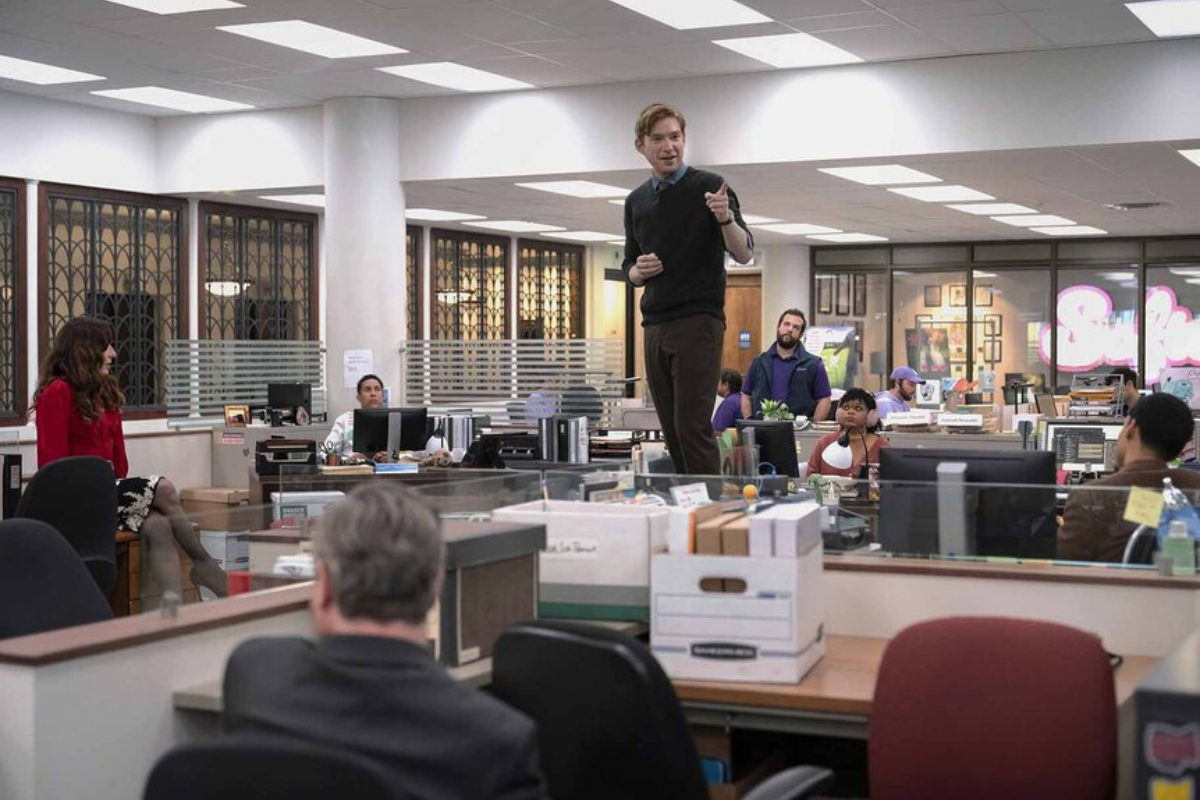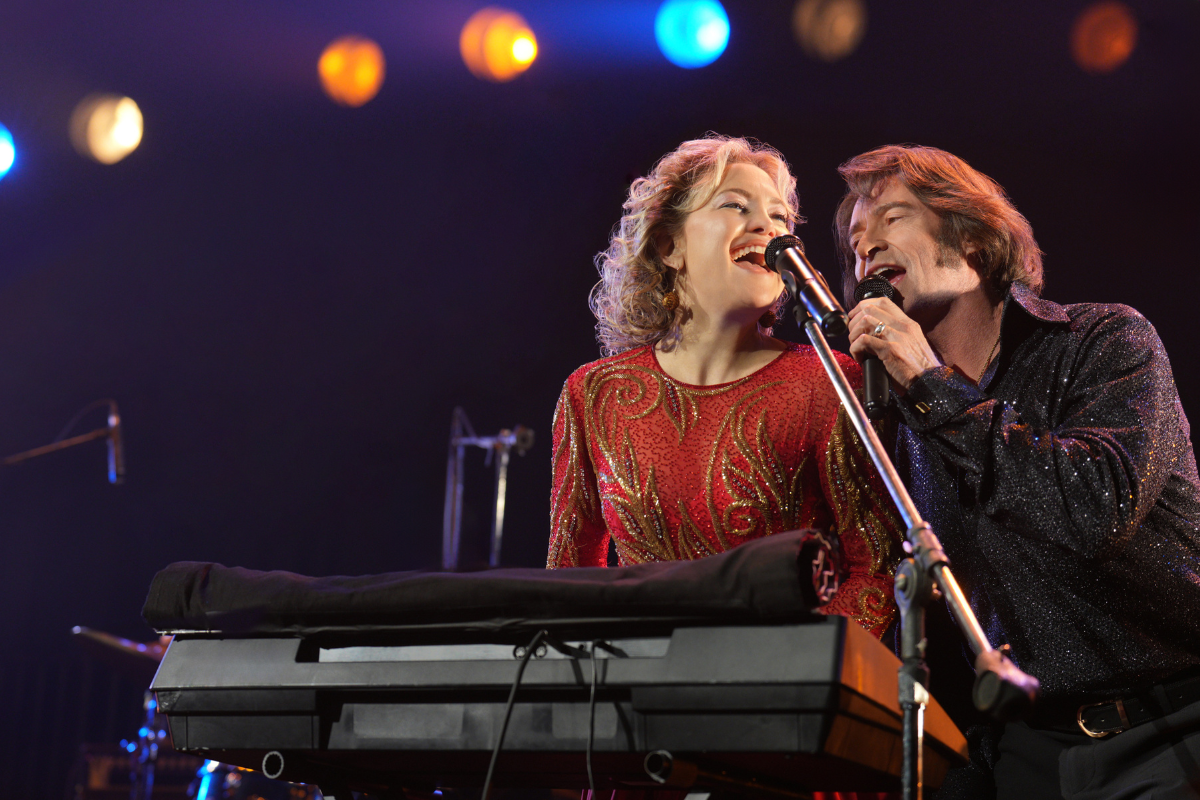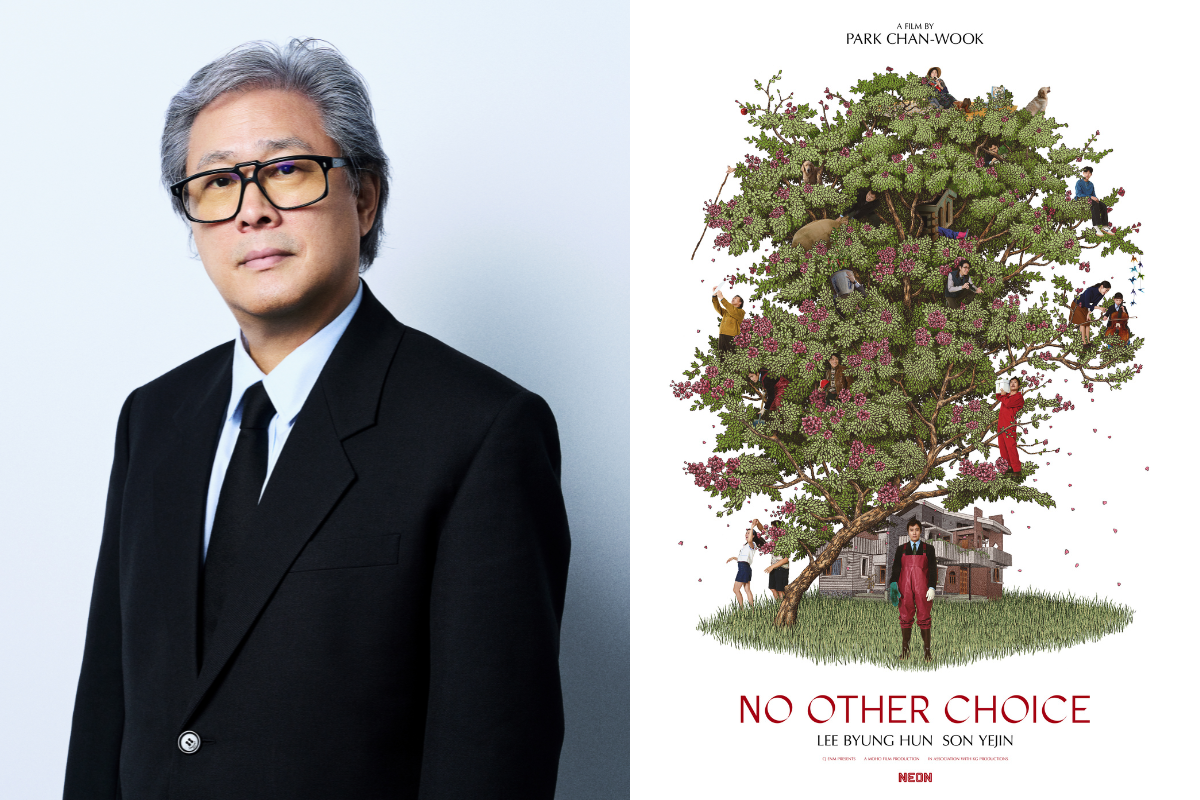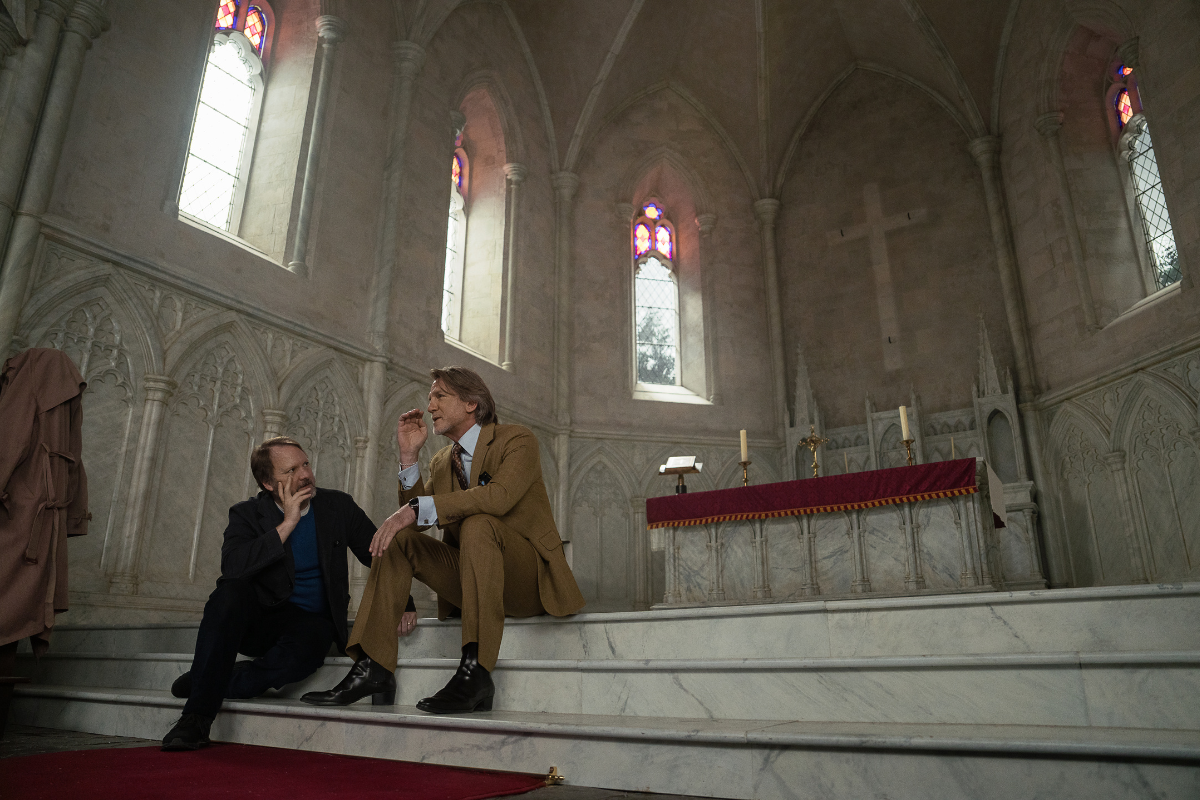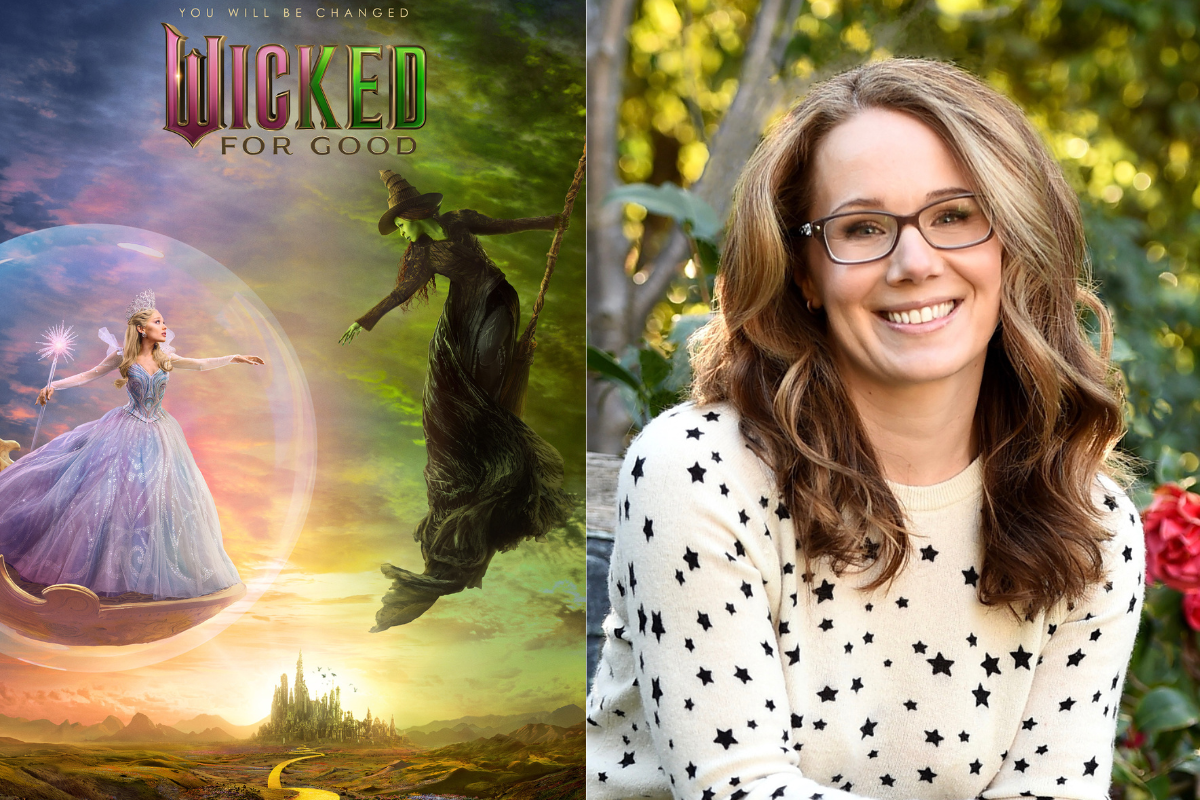A Beautiful and Simplistic Idea: A Conversation with ‘A Big Bold Beautiful Journey’ Screenwriter Seth Reiss
Seth Reiss highlights the inspiration from his personal heartbreak, his collaborative process with Kogonada, balancing drama and comedy, and emphasizes the importance of emotional depth and more.
Some doors bring you to your past. Some doors lead you to your future. And some doors change everything. Sarah (Margot Robbie) and David (Colin Farrell) are single strangers who meet at a mutual friend’s wedding and soon, through a surprising twist of fate, find themselves on A Big Bold Beautiful Journey – a funny, fantastical, sweeping adventure together where they get to re-live important moments from their respective pasts, illuminating how they got to where they are in the present…and possibly getting a chance to alter their futures.
“Doors are tricky.” The symbolism that line conveys is multi-layered. Just as are the doors and the love story that unfolds in screenwriter Seth Reiss’ latest film, A Big Bold Beautiful Journey. While it’s not your typical romantic tale, hanging onto familiar story beats, it’s an art piece, finely painted by director Kogonada (After Yang, Pachinko). “I think it is a beautiful piece of art that tells a very adult love story,” says Reiss. And I couldn’t agree more. There’s a wonderful sandbox or rather in this film’s case, black box, that all players get to have their time in.
In this conversation, Seth Reiss highlights the inspiration from his personal heartbreak, his collaborative process with Kogonada, balancing drama and comedy, and emphasizes the importance of emotional depth and more.
This interview has been edited for content and clarity.
Sadie Dean: The art piece that it is, I believe it's going to speak to a lot of people in different ways.
Seth Reiss: I think that's very true. I think a lot of people, and this is a testament to Margot [Robbie] and Colin's [Farrell] performance, but I think a lot of people will see themselves as beautiful as those people are… they're playing two very normal people, who are flawed in different ways.
It's really a story about parents and in a certain sense, and you can have parents who love you so much, and you can be a certain fucked up or you could have parents who perhaps weren't as present or have passed away, and you sort of feel alone in this world. And you can be your own sort of fucked up. It's about making a certain choice to go in a different direction, so perhaps they can get over that past and perhaps be together.
Sadie: The structure and the rules of this world, what was the process behind chiseling away to get to this narrative piece?
Seth: I came up with this idea because I was brokenhearted, and I was driving down to a wedding in a rental car, and there was so much love at the wedding, which made my broken heart pulverized even more. And on the way back from the wedding, the GPS said, 'Merge onto I-95,' and then I just thought, well, what if it said, 'Seth, do you want to go on a big bold beautiful journey?' At that moment, I would have said, 'Yes' because I was getting over this relationship and didn't think at that time that we should be apart. I thought we should be together. And I thought, 'How can we understand each other enough to get back together?' From there was really the premise, and I was very excited about the premise. And I knew at that point the GPS was going to take these characters to different parts of their lives.
The structure in a weird way, it's any piece of writing, but even like The Menu, it's how do we heighten each door? How do we heighten each location? Now, in the first iteration of the script, it wasn't doors, it was surreal buildings off the side of I-95. But once Kogonada said, 'What about doors?' I thought that was a beautiful idea and so simplistic.
And also, if you're our main character, you might recognize a door that your partner doesn't recognize and that the audience won't really recognize, but what's behind that door is very scary to you or important to you. I think that was very fun for Colin and Margot to play on their faces and also for their characters. But I just knew that we had to just heighten the level of tension and also the emotionality of what they needed to go through and what they needed to face from stop to stop.
Sadie: It’s definitely a heightened world that feels contained. It’s very interesting how you and the team involved were able to keep this feeling grounded in a surreal world.
Seth: One reason I was drawn to Kogonada directing it is I think we always had a mutual mind meld that it would be actually kind of Lo Fi. It's high concept with a Lo Fi execution of that concept. The surreality, I guess, of the world is manufactured by Ben Loeb doing the cinematography, and Kogonada and Ben Loeb coming together, and Katie Byron, our production designer, to make sure that we're in a heightened world, but we're not in this crazy heightened world. It's just heightened enough so it hovers above reality, just enough. And I think that allows then our characters to feel the genuine emotion that comes from these places again.
Sadie: How many versions of the screenplay had you written until Kogonada came on board?
Seth: I probably, before he came on board, had done like four or so drafts of the movie... the locations were always the same: lighthouse, museum, high school, hospital. But when he came aboard, he wanted to bring out the theatricality more, which I really loved. And he wanted to create characters who were sort of this idea of artifice, and they're actors, and we have to act in front of people, but yet, acting can get to a certain amount of truth. I love that idea so much. And when Kogonada wanted to really explore that, I was so game. Every idea that he had to enhance the script, I was down. I just thought it was just cooler and weirder. I really appreciate a director's ability to go down the chute of the script and then kind of heighten those ideas that are already there and then build on them and build on them and build on them.
Sadie: With your comedy background, there’s this feeling of 'Yes and...' as these two characters go on their journey.
Seth: Oh yeah. I like the idea of characters accepting that this is happening to them. And that's way more fun - maybe you can have them question a little bit like, ‘that's weird’ - but ultimately, they are saying yes to a machine, because they're in need of something. And so that need of something, and that's sort of yearning to maybe get a little better or be a little better - let's go along with this.
I think what I wanted was this intrinsic thought that they both have, which is that 'I feel like this is leading to something important for me. Let's keep going.' That is an amount of 'Yes and...' right? Because it's, 'Yes, I'll go through this door. Yes, I think this is important. I think we gotta keep going.'
Sadie: And finding humor though the pain. It’s a fine balance.
Seth: I think that in real life, typically in sad moments we do then let our sense of humor come out. We need that to sort of not just as defense mechanisms to protect us from the sad moments, because I think as human beings, we do live in the gray where we're not always dramatic. We're not always funny. We do bop back and forth, the situation remains the same, the thing that needs to be dealt with remains the same. But doesn't mean we can't joke around about it.
When someone says, like, 'What genre is this?' I think human beings live very genre-less lives. [laughs] I'm not living the life of a thriller that would be horrifying. [laughs] Mostly we're bopping around between comedy and drama every day,
Sadie: [laughs] Living a thriller life...
Seth: It's probably another movie that we should be writing right now. [laughs]
Sadie: Was there a central thematic anchor to guide you through this story?
Seth: Yeah, I think that everyone on board wanted the film to feel gentle and ultimately hopeful, while also being deeply human. I think everyone knew the tone of that and Kogonada leads with that, especially on set. It's a very gentle set. I don't want to blow up his spot, but he once said, 'I want to run my set, I want it to run like water.' Just flows like water. No rocks, just flows like water. And then I once said to him, 'Well, usually there are some rocks in water, right?' [laughs] but he just wanted it to flow. And he did, the vibe of the set had a lot of flow.
Sadie: I had the pleasure of speaking with Kogonada about his film After Yang – he has so much love and an affinity for cinema and storytelling. He’s able to find hope in even the darkest moments. And I think that's what's so beautiful about his lens.
Seth: There's a version of this movie in a different director's hands that feels very loud, and not, by the way, in an annoying way. I can see how it would feel like a lot of bustle and hustle. I actually wanted the gentle, softer version. When I watched Columbus and After Yang, I thought, 'It feels like my movie fits right in the middle of those two things.' We have two people getting together, like in Columbus, we have this Lo Fi high sci fi world in After Yang. Let's put that together.
I like that he keeps the camera at a distance. I think that sometimes that distance allows us to maybe lean in a little bit more, but feel that stillness. And I think there's a lot of warmth and stillness, and it's very gutsy to be still, and I find it beautiful.
A Big Bold Beautiful Journey is now playing exclusively in Theaters.
Sadie Dean is the Editor of Script Magazine and writes the screenwriting column, Take Two, for Writer’s Digest print magazine. She is also the co-host of the Reckless Creatives podcast. Sadie is a writer and filmmaker based in Los Angeles, and received her Master of Fine Arts in Screenwriting from The American Film Institute. She has been serving the screenwriting community for nearly a decade by providing resources, contests, consulting, events, and education for writers across the globe. Sadie is an accomplished writer herself, in which she has been optioned, written on spec, and has had her work produced. Additionally, she was a 2nd rounder in the Sundance Screenwriting Lab and has been nominated for The Humanitas Prize for a TV spec with her writing partner. Sadie has also served as a Script Supervisor on projects for WB, TBS and AwesomenessTV, as well as many independent productions. She has also produced music videos, short films and a feature documentary. Sadie is also a proud member of Women in Film.
Follow Sadie and her musings on Twitter @SadieKDean


